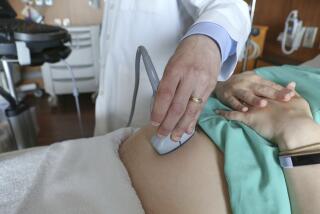Hospitals Maintain Delicate Balance to Preserve 911 System : Medical care: Officials were worried that Centinela Hospital’s announced return to the emergency network would affect service to South Bay areas.
- Share via
Four years ago, the emergency medical system in the northern South Bay was on the verge of collapse.
Centinela Hospital Medical Center in Inglewood had announced it would shut its emergency room to patients in 911 ambulances because of huge losses from treating patients unable to pay their bills.
Like toppling dominoes, hospitals in Hawthorne and Gardena threatened to follow suit. Medical officials cringed at the specter of ambulances carrying ill or wounded patients zigzagging from one closed emergency room to the next.
Out of the crisis of 1989 an experiment was born, one that helped keep the emergency room doors open at three South Bay hospitals that had considered closing them. The experiment carved out geographic service areas for the three hospitals, attempting to distribute the non-paying patients fairly among them while assuring that no hospitals would close during peak hours and divert ambulances elsewhere.
Now, that system is winning kudos from hospitals and emergency workers alike; it is even being copied by other Los Angeles County hospitals.
“All of us were surprised that it worked. We really had no idea what would happen,” said Nancy Sztukowski, a nurse manager who oversees the emergency room at Memorial Hospital of Gardena.
The three participating hospitals are Memorial of Gardena, Daniel Freeman Memorial Hospital in Inglewood and Robert F. Kennedy Medical Center in Hawthorne.
The system is working so well, in fact, that some officials at those hospitals have expressed concern about Centinela Hospital’s unexpected decision this spring to reopen its emergency room. In response, county emergency officials promise to work to preserve the current balance when Centinela reopens to 911 ambulances, probably on July 1.
It now appears that Centinela will not be assigned its own service area, but instead will serve as a backup to other hospitals.
Centinela’s announcement in December, 1988, that it would close to public ambulances responding to 911 distress calls crystallized worries about emergency service in a wide swath of the South Bay that includes Inglewood and Hawthorne.
At the time, a number of Los Angeles-area hospitals were curtailing emergency services or threatening to do so, blaming economic pressures such as the high cost of treating uninsured patients.
In announcing its decision to close its 10-bed emergency room to public ambulances, Centinela reported that its total bill for bad debt and charity cases had reached $8.5 million in 1988. The nonprofit hospital continued to accept walk-in and ambulatory emergency patients and those arriving in non-911 private ambulances, as well as obstetrics cases brought by public ambulances.
Within months, neighboring Robert F. Kennedy Medical Center asked the state for permission to follow Centinela’s lead and turn away public ambulances. Officials at Gardena Memorial and Daniel Freeman warned that they, too, might follow.
“The whole system was falling apart,” recalled Virginia Price-Hastings, county director of emergency medical services. “It was not working for the paramedics. It was not working for the doctors.”
At the time, the basic policy for 911 ambulances was to take patients to the closest hospital, a policy that remains in effect today for most of Los Angeles County.
But that was proving troublesome because an increasing number of hospitals were going on “diversion,” temporarily closing their emergency rooms during busy times because of crowded conditions.
So Price-Hastings and other county representatives met with representatives of Daniel Freeman, Gardena Memorial and Robert F. Kennedy, as well as with paramedic officials. They sat down around a large map of Los Angeles and began negotiating.
The system they devised, in effect since the spring of 1990, is founded on the concept that hospitals should serve the communities around them.
In basic terms, it works this way: Boundaries were drawn around the three hospitals. Each hospital agreed to take all 911 ambulances bearing patients from within those boundaries. And each hospital promised not to go on temporary diversion.
The plan proved to be popular with the hospitals because it assigns each a specific service area. And the county likes the plan because it guards against the danger of ambulances being diverted from hospital to hospital.
“We were having a terrible problem with diversion. . . . This minimized it, because hospitals could not close,” said Alan Cowen, chief of paramedics and commander of the bureau of emergency medical services at the Los Angeles City Fire Department.
“I don’t like ambulances going five miles or 10 miles across town to find a hospital,” Cowen said. While the hospitals may get busy, he said, “At least they cannot close, they cannot divert. They have to take our ambulances, and we like that.”
The plan proved so successful in the South Bay that variations were adopted recently at three other Los Angeles hospitals: California Medical Center and Hospital of the Good Samaritan near downtown Los Angeles, and White Memorial Medical Center nearby in Boyle Heights.
The April decision by Centinela Hospital that it was going to accept 911 ambulances again left other hospital officials worried about its effect.
After a series of meetings, Price-Hastings said Friday that Centinela will not be assigned its own service area, but will instead serve as a backup primarily to Daniel Freeman. For 911 calls where Centinela is the closest hospital, patients will be transported there, she said.
More to Read
Sign up for Essential California
The most important California stories and recommendations in your inbox every morning.
You may occasionally receive promotional content from the Los Angeles Times.










